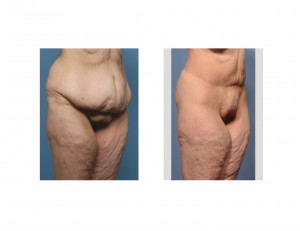Unlike many plastic surgery procedures that are performed in outpatient centers (e.g., breast augmentation, facelifts etc), body contouring is more extensive and invasive surgery. Some bariatric surgery patients also have associated medical conditions which may lead to increased complications form surgery or anesthesia. The question then becomes as to the safety of extensive body contouring procedures in an outpatient setting.

This study is impressive as 260 consecutive cases of any procedure is significant, let alone complex body contouring procedures. It demonstrates that good patient selection with an experienced plastic surgeon and anesthesiologist in an accredited surgery center can produce exceptional outcomes with a very low rate of complications. The lack of DVT and pulmonary embolism complications, albeit one patient, is noteworthy given the length of the surgeries and their extensive nature. Only one infection and such a low rate of seroma formation is also noteworthy given the hundreds of patients treated.
Wound complications are the norm in any form of body contouring whether it be the arms, breasts or lower body. I tell my patients to expect minor wound healing issues that will not be completely healed until six to eight weeks after surgery. It is never a question of if but where and how significant is the wound opening area.
This study clearly shows that many bariatric plastic surgery procedures can be safely performed as outpatient procedures. Combination procedures, which may take up to four to six hours of surgery, can be done and still send the patient home without increased risks of DVT or PE complications.
Dr. Barry Eppley
Indianapolis, Indiana


